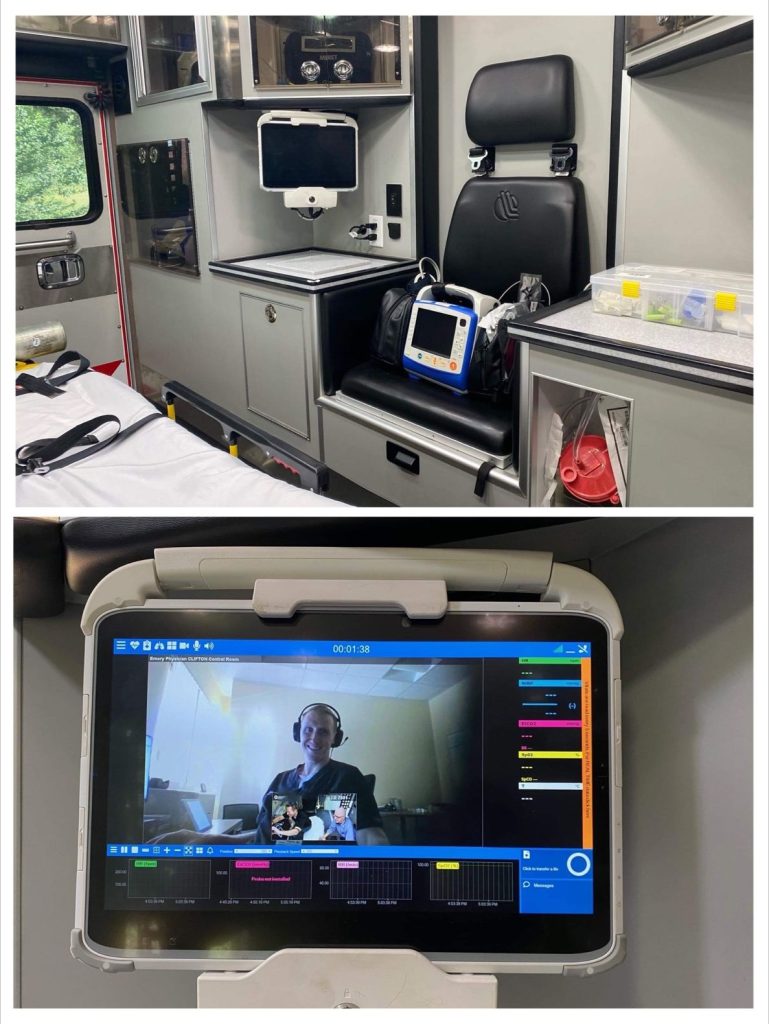
In emergency medical services (EMS), where every second counts, technology has become a critical ally. Among the most transformative tools are medical tablets, rugged and portable devices designed to meet the unique challenges faced by EMS personnel. These mobile handhelds not only improve operational efficiency but also elevate the quality of patient care delivered in critical situations. This article explores the pivotal role of medical tablets in EMS, their key features, benefits, and advancements in technology.
Transforming EMS Operations with Medical Tablets
Medical tablets serve as multifunctional tools in the fast-paced world of emergency response. Their applications extend across various aspects of EMS, including:
1. Real-Time Communication
Medical tablets enable seamless interaction between paramedics and hospital teams. With real-time data sharing and live video consultations, EMS personnel can communicate crucial patient information directly to emergency room staff, ensuring better preparedness and faster treatment upon arrival.
2. Electronic Patient Care Reporting (ePCR)
Gone are the days of handwritten notes and cumbersome paperwork. Medical tablets streamline patient care reporting by allowing immediate digital documentation of patient data. These electronic reports can be shared instantly with hospitals, reducing documentation errors and saving valuable time.
3. Instant Access to Medical Databases
EMS providers often face situations requiring quick decisions. Medical tablets offer access to up-to-date drug references, treatment protocols, and patient histories, empowering paramedics to make informed choices swiftly and effectively.
4. Telemedicine Capabilities
Telemedicine has revolutionized pre-hospital care. With medical tablets, EMS teams can engage in live video consultations with specialists, facilitating real-time guidance during emergencies. This capability is particularly valuable in remote areas where specialized care might otherwise be delayed.
Key Features of Medical Tablets for EMS
To meet the rigorous demands of EMS environments, medical tablets incorporate several essential features:
Rugged Design
Medical tablets are built to withstand extreme conditions, including a wide range of temperatures, vibrations, water exposure, and dust. Their durability ensures reliability in the unpredictable environments EMS teams encounter.
High-Resolution Touchscreens
Visibility and usability are paramount, especially under challenging lighting conditions. Medical tablets are equipped with high-resolution touchscreens designed for operability in bright sunlight or dimly lit settings.
Long Battery Life and Hot-Swappable Batteries
In prolonged emergencies, uninterrupted device operation is crucial. Medical tablets with extended battery life and hot-swappable batteries allow EMS providers to focus on patient care without worrying about power shortages.
Integrated Cameras
Integrated cameras enable EMS personnel to capture images or videos of injuries, wounds, or scenes for documentation and remote consultations. This visual data enhances communication with medical teams and aids in accurate diagnostics.
Wireless Connectivity
Reliable internet and network connectivity ensure that EMS teams can access hospital systems, medical databases, and telemedicine services from virtually anywhere.
Benefits of Medical Tablets in EMS
The adoption of medical tablets offers numerous advantages that directly impact patient outcomes and operational efficiency:
Enhanced Patient Care
With immediate access to medical records, treatment guidelines, and telemedicine support, EMS providers can deliver faster and more accurate care, improving patient outcomes in critical situations.
Improved Documentation Accuracy
Digital reporting reduces errors associated with traditional handwritten methods. Comprehensive and accurate documentation ensures continuity of care as patients transition from pre-hospital to hospital settings.
Streamlined Workflow
Medical tablets simplify data entry and communication, enabling EMS personnel to dedicate more time to patient care rather than administrative tasks.
Cost Efficiency
By reducing reliance on paper-based systems and minimizing administrative overhead, medical tablets contribute to cost savings for EMS organizations.
Case Study: Washington County Regional Medical Center (WCRMC)
A prime example of medical tablets’ impact in EMS is seen in the operations of Washington County Regional Medical Center (WCRMC) in Georgia. The center utilizes rugged medical tablets from DT Research, integrated with swyMed’s telemedicine software, to enhance emergency response capabilities.
Key Outcomes:
- Real-Time Video Consultations: EMS personnel connect with emergency department physicians during patient transport, facilitating early diagnosis and treatment planning.
- Specialist Access: Critical cases benefit from immediate consultation with specialists, ensuring timely interventions.
- Improved Decision-Making: Real-time data sharing helps route patients to the most appropriate care facilities, optimizing resource utilization and reducing time-to-care.
This integration has led to significant improvements in pre-hospital care quality and patient outcomes.
Advancements in Medical Tablet Technology
Recent technological advancements have further optimized medical tablets for EMS use, making them indispensable in modern emergency response operations:
14th Generation Healthcare Computing Solutions
Innovations such as DT Research’s medical-cart computers and all-in-one medical devices feature enhanced processing power, streamlined interfaces, and tailored functionalities for diverse healthcare settings.
Enhanced Telemedicine Integration
Seamless telehealth software integration enables EMS teams to connect with specialists in real-time, expanding the reach of medical expertise to even the most remote locations.
Considerations for EMS Providers
When selecting medical tablets, EMS organizations must prioritize features that align with their operational needs. Key considerations include:
Durability
The device must withstand the physical demands of emergency response, including harsh weather, vibrations, and accidental drops.
Battery Life
Sufficient battery life, along with options for hot-swappable batteries, is essential for uninterrupted device operation during extended shifts.
User Interface
An intuitive and responsive interface ensures quick access to critical information and facilitates efficient data entry under high-pressure conditions.
Compatibility
Medical tablets should seamlessly integrate with existing EMS and hospital systems, ensuring smooth data sharing and workflow continuity.
Security
Compliance with healthcare data protection regulations, such as HIPAA, is non-negotiable to safeguard patient information and maintain confidentiality.
Medical tablets are revolutionizing EMS by bridging the gap between pre-hospital and hospital care. Their advanced features, from rugged designs to telemedicine capabilities, empower EMS teams to deliver faster, more efficient, and higher-quality care. As technology continues to evolve, the integration of these devices into emergency response systems will further enhance their potential, ultimately saving more lives and improving patient outcomes.
By investing in the right medical tablets, EMS providers can ensure they are equipped to meet the challenges of modern emergency response, setting a new standard for excellence in pre-hospital care.

